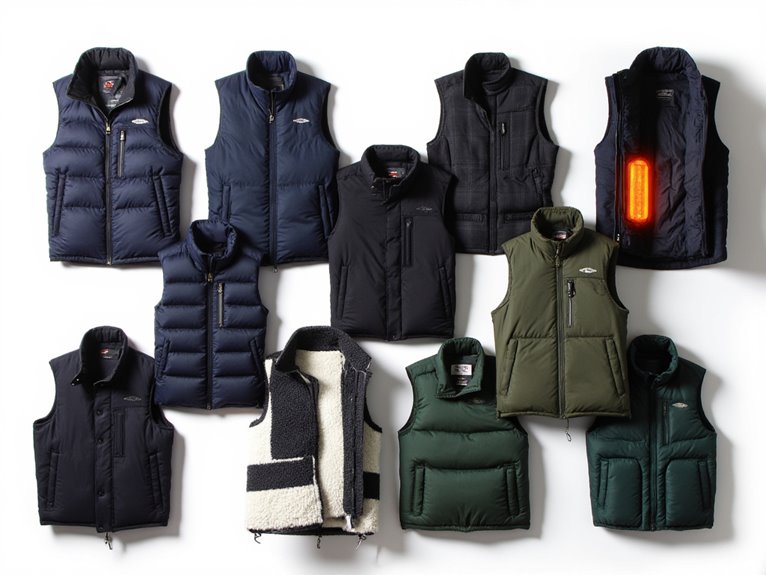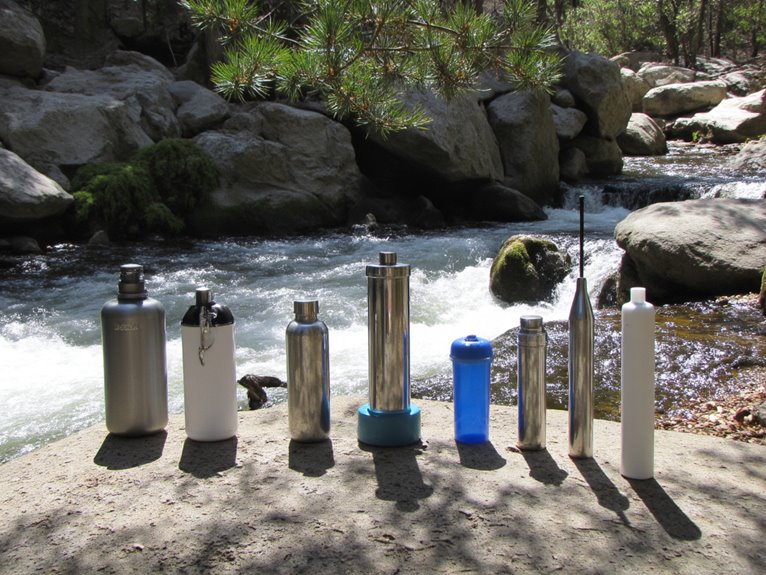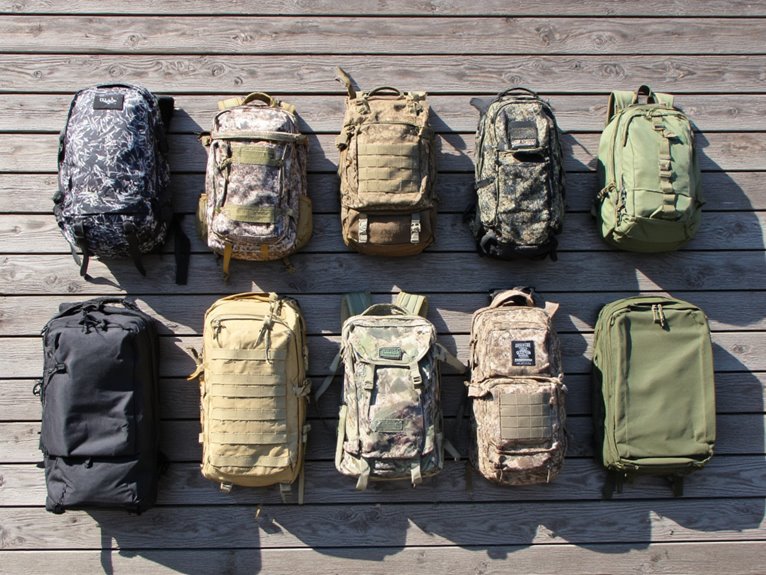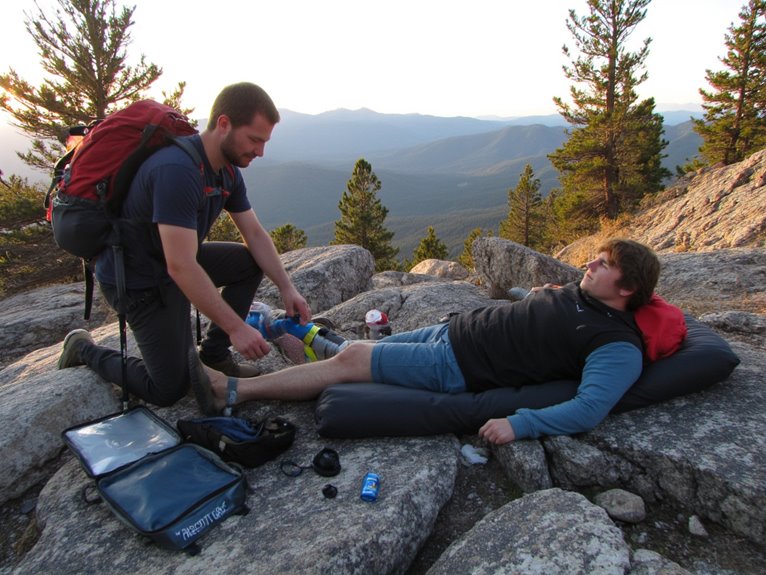How Big a Pack for a 2 Day Hike?
When planning a 2-day hike, it's essential to choose the right backpack size to carry all your essentials without being too bulky. A pack with a capacity of 20-30 liters is usually sufficient, as it allows for a balance between packing essentials and minimizing weight and bulk. Consider the terrain, weather forecast, and your personal comfort level to determine your packing needs. By prioritizing multi-use items, choosing lightweight options, and efficiently organizing your gear, you can maximize your pack's capacity and guarantee a comfortable, enjoyable hike. See how to strategically pack for your trip to maximize space and comfort.
We are supported by our audience. When you purchase through links on our site, we may earn an affiliate commission, at no extra cost for you. Learn more. Last update on 1st January 2026 / Images from Amazon Product Advertising API.
Determining Your Packing Needs
Determining Your Packing Needs
Your packing needs for a 2-day hike are shaped by factors such as the terrain, weather forecast, and your personal comfort level.
Consider the elevation gain, trail conditions, and potential hazards like inclement weather or wildlife encounters.
The weather forecast will influence your clothing and gear choices, while your personal comfort level will dictate the level of luxury items you bring.
Additionally, consider any specific regulations or guidelines for the area you'll be hiking in.
Pack Size and Capacity
A backpack with adequate capacity and comfortable carrying features is essential for a 2-day hike, as it will hold all your gear while minimizing fatigue and discomfort.
When selecting a backpack, consider the total volume and compartmentalization. A pack with a capacity of 20-30 liters is usually sufficient for a 2-day trip.
Look for features like multiple compartments, pockets, and attachment points to keep gear organized and easily accessible.
A comfortable and adjustable harness, as well as padded shoulder straps and hip belt, will help distribute the load evenly and reduce fatigue.
Consider a pack with breathable mesh panels and moisture-wicking materials to keep you cool and dry.
Essential Items to Bring
When preparing for a 2-day hike, it is vital to prioritize the essential items that will safeguard a safe and comfortable journey.
Among the must-haves are personal hygiene items, which will help maintain cleanliness and prevent the spread of illnesses.
Additionally, carefully selecting clothing and accessories will provide protection from the elements and boost overall performance on the trail.
Personal Hygiene Items
Personal hygiene items, although often overlooked, are essential to maintaining physical and mental well-being during a 2-day hike.
A few carefully selected items can make a significant difference in comfort and morale.
Pack biodegradable soap, toilet paper, and hand sanitizer to maintain cleanliness.
Include a small supply of baby wipes for quick cleanups and a travel-sized toothbrush and toothpaste for oral hygiene.
For women, consider adding sanitary products as needed.
Remember to pack all items in airtight containers to keep them dry and protected from the elements.
Clothing and Accessories
Hikers should pack clothing and accessories that can adapt to changing weather conditions and provide comfort and protection throughout the 2-day hike.
Essential clothing items include a breathable base layer, insulating mid-layer, and waterproof jacket.
Don't forget a warm hat and gloves for cold weather.
Sturdy hiking boots or trail running shoes with good traction are a must.
Accessories such as gaiters, trekking poles, and a first-aid kit can provide additional support and protection.
Quick-drying, moisture-wicking fabrics are ideal for hiking clothing.
Consider packing clothes that can be layered for varying temperatures.
A compact and lightweight setup will help minimize pack weight and maximize comfort on the trail.
Clothing and Layering Options
A well-planned clothing and layering system is essential for a comfortable and safe 2-day hike, as it allows for adaptability to changing weather conditions and physical activity levels.
When selecting clothing, consider the following items:
- A breathable base layer (top and bottom) for moisture management
- A lightweight, insulating mid-layer (fleece or synthetic) for warmth
- A waterproof and wind-resistant outer layer (jacket and pants) for protection
- A warm hat and gloves for cold weather
- Quick-drying, moisture-wicking socks for comfort and blister prevention
Footwear and Accessories
Sturdy, ankle-high hiking boots with good tread and waterproofing provide a solid foundation for a successful 2-day hike.
Look for boots with breathable membranes, such as Gore-Tex or eVent, to keep your feet dry.
Additionally, consider bringing a spare pair of socks and a lightweight, quick-drying camp shoe for lounging around camp.
Trekking poles can also be a valuable addition to your pack, especially if you have knee or ankle issues.
Don't forget to pack extra laces, insoles, and a small repair kit with safety pins, glue, and duct tape to guarantee your footwear stays in top condition.
When venturing into the wilderness, prioritizing navigation and safety is vital.
A well-prepared hiker should always carry essential tools to guarantee a safe and successful journey.
In the following section, we will discuss the importance of map and compass skills, a basic first aid kit, and emergency signaling devices.
Map and Compass Skills
Every hiker should possess basic map and compass skills to navigate through unfamiliar terrain and guarantee a safe return. Understanding how to read a topographic map, use a compass, and take bearings can mean the difference between a safe return and a perilous night in the wilderness.
Some essential skills to master include:
Holding the compass level and still to obtain accurate readings
Orienting the map to the surrounding environment
Identifying landmarks and backstops to stay on course
Taking bearings to determine direction
Using the sun and stars to estimate direction when all else fails
Basic First Aid Kit
Accidents can happen even with proper navigation, making a well-stocked first aid kit an indispensable component of any hiking excursion.
A basic first aid kit should include items to treat minor injuries, such as cuts, scrapes, and blisters.
Essential supplies include bandages, antiseptic wipes, pain relievers, and any personal medications.
It's also wise to include blister care items, such as moleskin and blister pads.
A small guidebook on basic first aid techniques is also a valuable addition.
Remember to check the expiration dates of any medications and supplies, and restock as needed.
A well-stocked first aid kit can help you respond to unexpected medical situations and facilitate a safe and enjoyable hike.
Emergency Signaling Devices
A reliable emergency signaling device, such as a whistle or personal locator transmitter (PLT), can be a lifesaver in the event of an unexpected overnight stay or separation from your hiking group. These devices can help you signal for help and get rescued quickly.
Some examples of emergency signaling devices include:
- A loud, pea-less whistle that can produce a loud, high-pitched sound to signal for help
- A personal locator transmitter (PLT) that sends a distress signal to emergency responders
- A mirror or reflective device to reflect sunlight towards any airborne rescue teams
- A flares or pyrotechnic signaling devices to create a visible signal
- A satellite messenger or GPS device with emergency SOS capabilities
First Aid and Hygiene Kit
A well-stocked First Aid and Hygiene Kit should address personal hygiene and sanitation needs during a 2-day hike, in addition to treating wounds.
This includes hand sanitizer, toilet paper, and biodegradable soap for washing hands and face.
Additionally, include a small supply of feminine hygiene products, if applicable.
A small container for storing used toilet paper and sanitary products is also essential.
Antiseptic wipes, antibiotic ointment, and pain relievers should also be included to treat minor injuries.
A compact mirror and any personal medications should not be forgotten.
A well-organized and stocked First Aid and Hygiene Kit will help guarantee a safe and comfortable hiking experience, and promote a feeling of security throughout the trip.
Food and Water Planning
Proper nutrition and hydration are vital components of a successful 2-day hike, and careful planning is necessary to guarantee a steady supply of energy-rich foods and safe drinking water.
A well-planned food and water strategy guarantees you maintain energy levels, stay focused, and enjoy the hike.
High-calorie snacks like nuts, dried fruits, and energy bars are essential.
Trail-friendly meals such as freeze-dried meals or canned goods are also a must.
Water purification tablets or a portable water filter are necessary to ensure safe drinking water.
A refillable water bottle or hydration bladder is also essential for staying hydrated.
A lightweight camping stove or portable grill for meal preparation is also recommended.
Shelter and Sleeping Gear
For a 2-day trip, a lightweight and compact shelter is ideal.
A two-person backpacking tent weighing around 2-3 pounds is a good option. Consider a tent with a freestanding design and a waterproof rainfly.
For sleeping gear, a good quality sleeping bag with a comfort rating of around 30-40°F (-1 to 4°C) should be sufficient for most two-day hikes.
A sleeping pad with an R-value of around 2-3 will provide adequate insulation.
Don't forget to pack a sleeping bag liner for extra warmth and a camp pillow for a comfortable night's sleep, thereby facilitating a peaceful night's rest.
Weight and Space Optimization
When preparing for a 2-day hike, weight and space efficiency are vital considerations.
By strategically reducing pack weight and prioritizing essential items, hikers can conserve energy and increase overall comfort on the trail.
In this section, we'll delve into the key strategies for achieving ideal pack weight and maximizing available space.
Pack Weight Reduction
A well-planned packing strategy is essential for minimizing pack weight and maximizing space, as every ounce and inch counts on a 2-day hike.
By adopting a few simple techniques, you can substantially reduce the weight and bulk of your pack.
Roll clothing to save space and reduce wrinkles.
Choose multi-use items, like a sarong that doubles as a blanket and towel.
Select lightweight and compact versions of essential gear, such as a titanium spork.
Remove excess packaging from food and toiletries to minimize waste.
Consider a 'just-in-case' approach, leaving non-essential items behind.
Essential Item Prioritization
To optimize pack weight and space, it's essential to prioritize essential items by distinguishing between needs and wants, ensuring that only the most indispensable gear makes the cut.
This requires a critical evaluation of each item's importance and potential consequences of omission.
Begin by categorizing items into must-haves, nice-to-haves, and luxury items.
Must-haves include safety gear, first aid kits, and adequate clothing.
Nice-to-haves might include comfort items like camp chairs or extra clothing.
Luxury items, such as books or gourmet food, should be eliminated or minimized to conserve weight and space.




